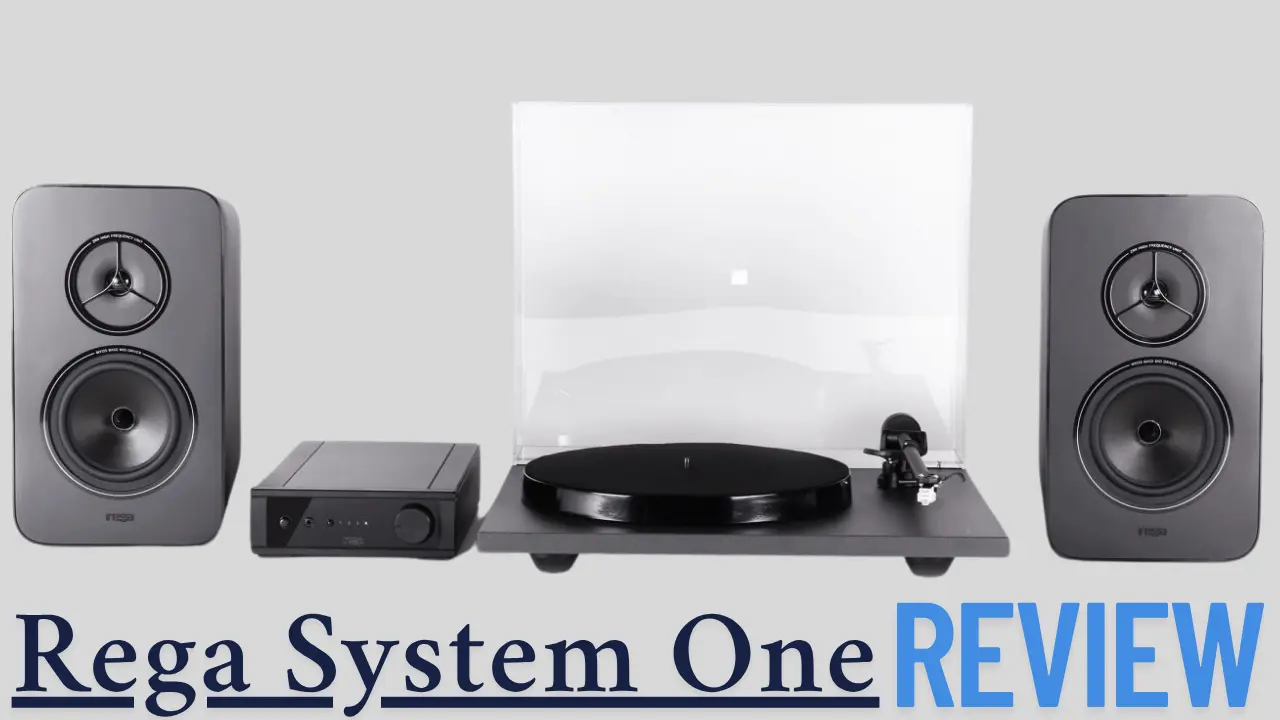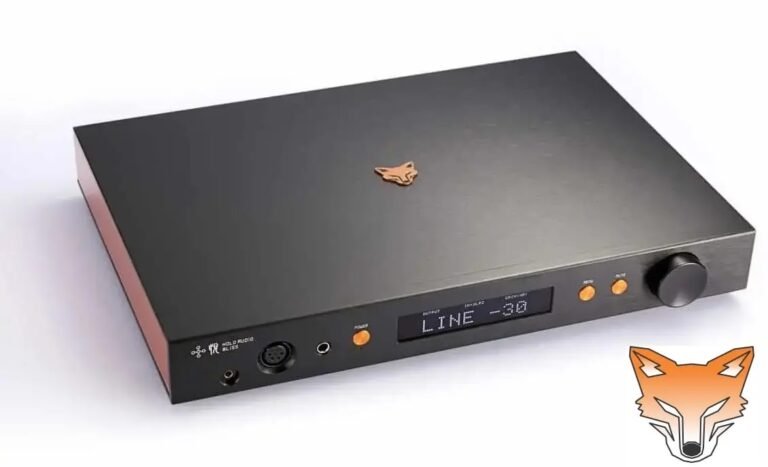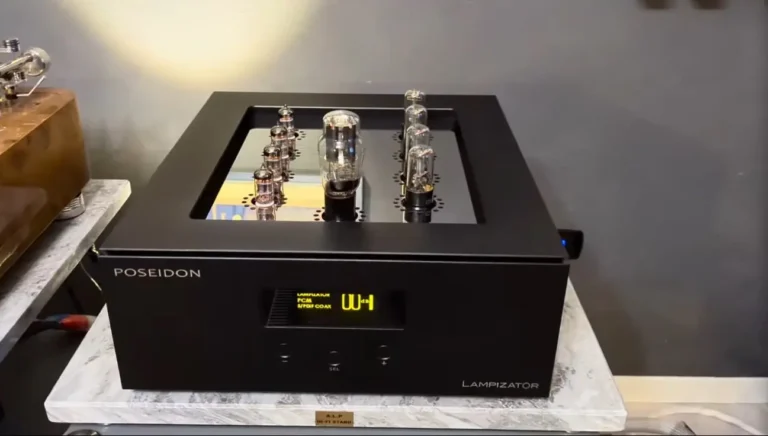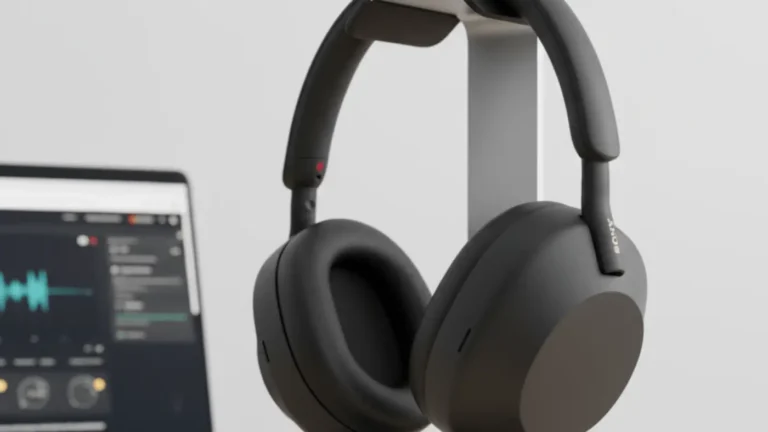Rega System One Review: A Complete Audiophile Starter Pack with the Rega Io, Kyte, and RP1 Trio
Whether you’re just stepping into the world of vinyl, setting up a second system in your hobby space, or outfitting a weekend retreat, the Rega System One offers an affordable, all-in-one solution for vinyl lovers. It includes a turntable, amplifier, and speakers, all designed to work together seamlessly. But does this all-Rega combo unlock any unique sonic synergy? Is there a component that holds it back? And where could an enthusiast go next when it’s time to upgrade? We dig in to find out in this comprehensive Rega System One review.
What is the Rega System One?
To get straight to the point: the Rega System One contains nothing that was not previously available separately. However, it highlights two key facts: first, that Rega, which has been a full-range supplier with brilliant developers and exemplary vertical integration for decades, should also be recognized for its amplifiers and speakers, not just for its turntables. And secondly, that despite the cross-manufacturer compatibility on which all hi-fi is based, there can still be advantages if you combine components that not only fit together technically and fundamentally, but also philosophically and sonically.
We also and especially expect such synergies from System One, whose manufacturer has always distinguished itself through a particularly straightforward design philosophy and the stringent pursuit of it. The tight budget – each component is the cheapest in the Rega catalog – means compromises have to be made. However, they may reveal more about the working methods of people from southern England than the more expensive premium solutions, such as the System One, a Rega distillate that has been distilled three times.
The System One package keeps things simple and practical. Aside from a basic leaflet with setup instructions, a pair of standard speaker cables, and a shared outer box (measuring 50 x 45 x 70 cm), there’s nothing exclusive here—just Rega’s trusted components: the Io integrated amplifier, the Planar 1 turntable, and a pair of Kyte bookshelf speakers. It’s Rega’s first all-in-one system, and it fits nicely into one of my favorite hi-fi categories: setups you can carry and relocate on your own in a single trip.
Had Rega opted for separate boxes, it might’ve been manageable: speakers strapped to a rear rack, amp in a backpack, and the turntable upright and secured. But instead, everything comes packed in the original Planar 1 box, which is then placed inside the larger shared carton. While the turntable is safely nestled in molded styrofoam and well-protected for initial shipping, it’s not ideal for moving around afterward, especially without its dedicated box. This is the only puzzling choice Rega made with System One. Not just because few users will haul it by bike, but because the turntable, of all components, is the one that most needs its original packaging if the system is ever relocated or resold in the future.
Built to Last: A System That Grows With You
Unlike many typical all-in-one systems, Rega’s System One doesn’t lock you into a dead end. On the contrary, its components, the Planar 1 turntable, Kyte speakers, and Io amplifier, are all standalone hi-fi products in their own right. Each focuses so precisely on its core function that it resists obsolescence. These aren’t throwaway parts bundled for convenience; they’re quality pieces designed to last.
So if you decide to upgrade the turntable a decade from now, the Planar 1 will still be a worthwhile piece to pass along to a budding vinyl enthusiast. Turntable design hasn’t changed drastically over the years, and it’s unlikely to evolve in a way that makes something like the Planar 1 irrelevant. The same goes for the Io amplifier, which carries forward the spirit of classic entry-level British hi-fi—think Mission Cyrus 1, Naim Nait 1, Creek 4330, Musical Fidelity A-1, or Rega’s own early Brio.
Many audiophiles, regardless of how far they’ve moved up the chain, still hold a soft spot for these modest yet musical amps. There’s a certain magic in hearing your first genuinely good system—and that feeling is hard to recreate, no matter how high your future hi-fi budget climbs.
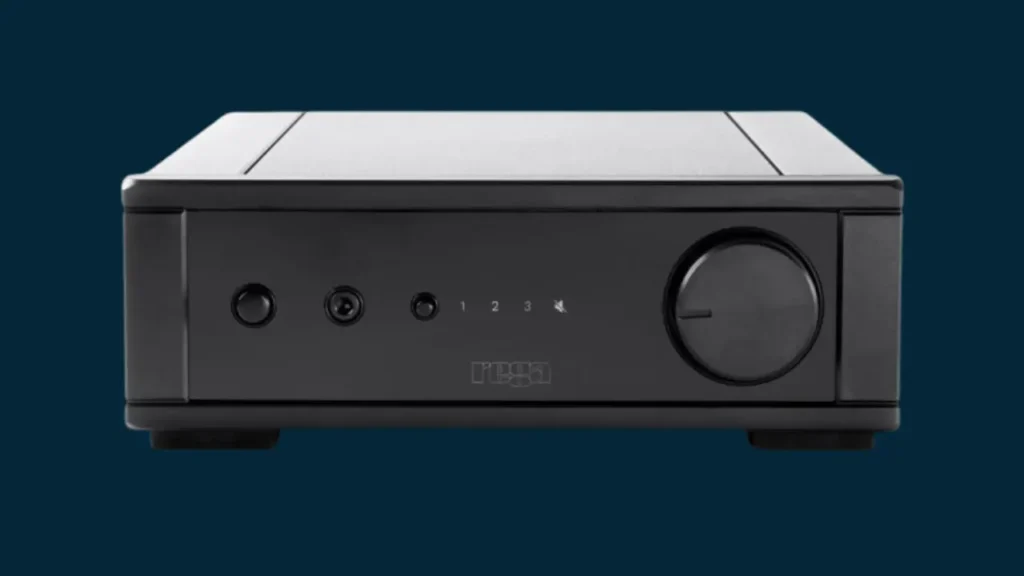
Component Breakdown
The Amplifier: A Closer Look at the Rega Io
Of the three components in the Rega System One, the Io amplifier is already a familiar face—we’ve previously put it through its paces in a full review. So here’s a quick recap: the Io is a compact integrated amp housed in a sleek, all-metal chassis. It provides connections for a pair of speakers, three line-level sources, and even includes a headphone output. Among those three inputs is a moving magnet (MM) phono stage, and it’s a standout. It performs well above expectations for its class, offering rich, clean signal handling that rivals dedicated phono preamps at higher price points.
Internally, the Io shares much of its design DNA with Rega’s bigger Brio amplifier. However, it’s been cleverly scaled down to fit into this smaller, more minimalist form. To manage heat, the amp uses its bottom plate as a heat sink. And yes, the case gets noticeably warm during extended high-volume sessions, but it’s engineered for that, and it doesn’t affect performance or reliability.
The Io can be remotely controlled and comes standard with the sound genes of its big brother, Brio. It is also almost the same in terms of circuitry and is actually only slightly inferior in terms of performance: 2 x 30 watts at 8Ω and almost twice as much at 4Ω – that’s still enough for all musical tasks, as long as you’re not completely resistant to advice when buying loudspeakers. For a full tribute to the Io’s sonic capabilities
In summary, I would describe the sound as extremely lively, almost tube-like, transparent, and wiry-dynamic rather than full-soft or even laid back. In other words, just as you have always imagined a Rega amp, only without the sometimes annoying bitchyness of older generations in the interaction with the loudspeaker: With high-impedance, less complex loads, a smoothly eloquent Dr. Jekyll, for example, old Brio from the ’90s could suddenly mutate into a harshly barking Mr. Hyde if the loudspeaker didn’t meet him far enough.
Anyone who still remembers this should urgently borrow an Io – and then be amazed at how fearless and balanced the little Rega drives even demanding sound transducers. Of course, without sacrificing the direct, dancing, agile dynamics that are typical of Rega, which always makes other amps seem a bit lethargic and down-pitched in comparison.
The Speakers: Diving into the Rega Kyte
The Io should have no trouble driving the Kyte. Rega’s bookshelf speaker, priced at around $700 per pair, is the latest evolution of a long-standing design concept. Even the original Kyte from the 1990s used a modest 12.5 cm (5-inch) woofer with a paper cone, a material choice that was quite unfashionable back then. Over the years, the driver has been steadily refined, and production is now fully in-house. Yet the core specs remain unchanged: a 5-inch, relatively shallow cone made from lightweight, stiff, and low-resonance paper; a compact but efficient four-layer voice coil designed to be amplifier-friendly with its 6Ω impedance; and a solid, hard rubber phase plug replacing the typical resonant dust cap at the center.
A fine, lightning-fast mid-bass driver that has no competition to fear, especially at the upper end of its range, and over the years has helped numerous Rega speaker models to achieve precisely articulated, fast-paced, grooving bass. The small cardboard cone could almost be considered a full-range driver, but hands over the high-frequency work to a highly qualified competitor: the ZRR tweeter, also made by Rega, a small, air-cooled fabric dome.
ZRR stands for Zero Rear Reflection: The drive of the tweeter has a cleverly designed, hollow pole core that very effectively absorbs sound radiated from the rear. This should significantly reduce discoloration caused by reflections arriving at the back of the dome with a delay. The treble of the Kyte sounds pleasantly fine, free, and unobtrusively alive. And its fragrant openness is reminiscent of the small Scan Speak domes D2010, which, for example, my speaker companion Naim SBL, which I had used for decades, brought with me.
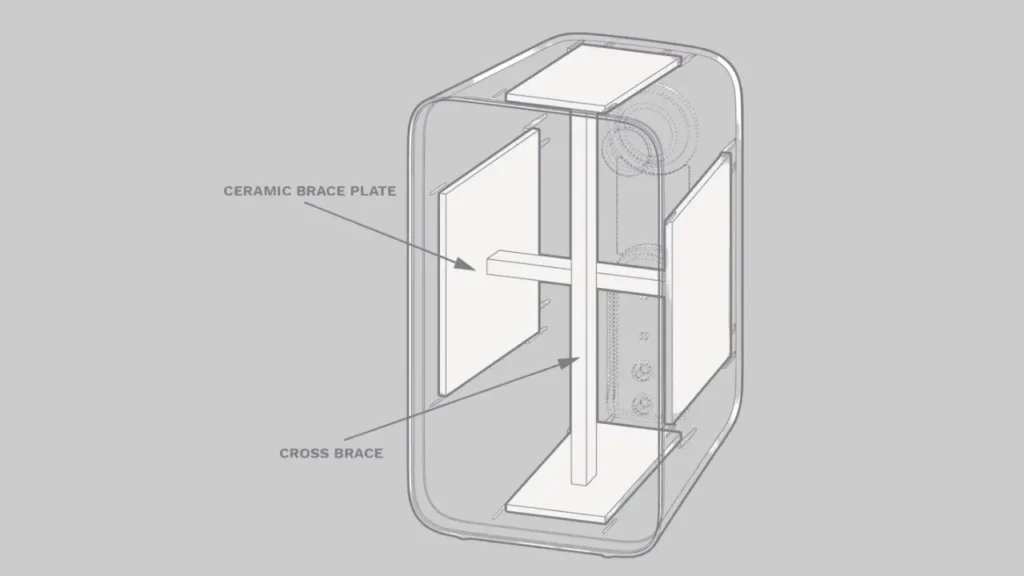
The Unique Cabinet of the Rega Kyte
The Rega Kyte’s enclosure takes a moment to get used to. Visually, it’s no luxury finish—it’s a matte black, injection-moulded shell that feels more like the rear bumper of a 1990s VW Passat B3 than a traditional hi-fi cabinet. But just like that bumper, it’s tough as nails. This kind of no-nonsense, utility-focused design is more often seen in the pro audio world, where gear gets roughed up and durability matters just as much as sound.
But Rega didn’t just grab any plastic. Instead of the more common ABS, the Kyte uses phenolic resin duroplast—a dense, rock-hard thermoset plastic. Once it’s cured, it’s practically indestructible, a fact anyone who’s handled old-school electrical sockets or vintage light switches made from the same material can attest to.
You may like: ELAC Miracord 80 Turntable Review:
Despite being far thinner than a typical wooden cabinet, the Kyte enclosure doesn’t sound or behave like one. Tap on it and you’ll hear a dry, precise “tack”—no hollow ring, no resonance. In contrast, many wooden enclosures sound like small percussion instruments when knocked. The Kyte’s sonic neutrality comes from more than just material choice. Internally, the case is ingeniously engineered: its walls, base, and top are reinforced with ceramic brass plates and structural bracing that lock the enclosure into a tight, inert unit. Whether playing quietly or loud, there’s almost no vibration detectable on the surface.
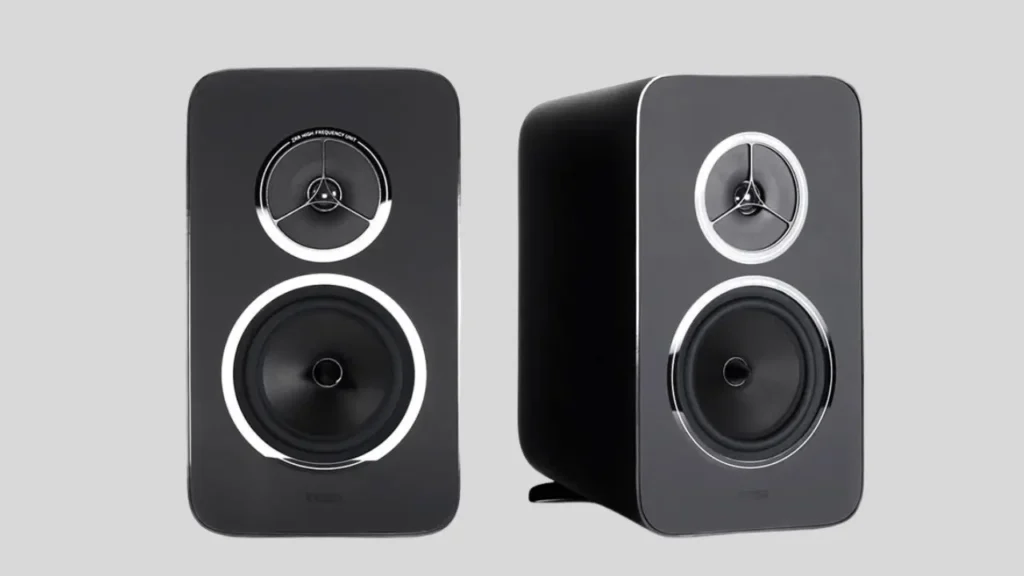
A Closer Look at the Rega Kyte
While the Rega Kyte’s cabinet is predominantly made from ultra-rigid phenolic resin, there’s one notable exception: the front baffle, which holds the drivers, is made from wood or fibreboard. This wooden baffle gives the drivers a solid mounting platform and contributes to the overall acoustic behavior. A satin-grey plastic cover sits flush over the baffle, concealing the screws and driver baskets, lending the speaker a clean, modern finish. It also acts as a deterrent to curious DIYers—once removed, the cover likely can’t be reused without replacement.
We suspect that inside, Rega has fitted the Kyte with a well-designed crossover, possibly featuring hand-wound coils—a task Rega is known to handle in-house. In fact, not only is the final assembly done in the UK, but even the resin cabinets themselves are cast domestically. That’s a rare claim in this price segment. Molds for such enclosures are expensive to produce, so it’s clear Rega made a serious upfront investment in the Kyte’s design. The trade-off? No outsourcing to Far East factories—everything is built with British precision. It’s a move that only makes financial sense if the product moves in decent volume—something we genuinely hope the Kyte and System One achieve.
In a subtle touch of elegance, Rega uses self-adhesive foil to mask the driver screws on the baffle. If a driver ever needs replacement, a new foil can be applied, keeping the speaker’s appearance pristine.
The Kyte’s rear-angled sidewalls might look like a trick to minimize standing waves, but in truth, it’s a casting necessity—a slight taper ensures the cabinet can be removed cleanly from its mold. The sloped bottom panel naturally tilts the speaker’s front baffle slightly backward. For situations where a vertical orientation is preferable—like placing the speakers on a shelf—included plastic supports allow the speaker to stand upright. Rega also offers optional steel bases that screw into the same threaded inserts, ideal for use on proper stands. During our test, we kept it simple and used BluTack to secure the Kytes to shelves and stands.

The Turntable: The Rega Planar 1
Even the most beautifully matched amp and speaker combo can fall flat without a high-quality source. In an all-analogue setup like the Rega System One, the turntable’s role is critical—it’s where everything begins. And while budget constraints always play a part at this price point, Rega has managed to deliver an entry-level deck that doesn’t feel like a compromise.
Rega’s track record with affordable yet great-sounding turntables is well established. The Planar 2 and Planar 3—both enduring bestsellers—have shown just how much performance the company can squeeze out of minimalistic designs. The Planar 1, formerly known as the RP-1, now carries that same spirit into an even more affordable tier.
Positioned just below the Planar 2, the Planar 1 brings Rega’s core philosophy of simplicity, precision engineering, and sound-first design to the beginner’s table. It may be the most wallet-friendly model in Rega’s turntable lineup, but it’s anything but a throwaway. With decades of design refinement behind it, the Planar 1 is a serious piece of kit that gives System One a source worthy of the name.
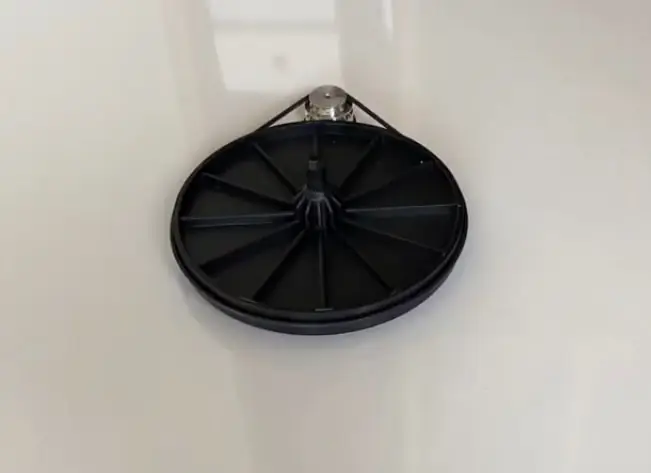
Like all Rega turntables, the Planar 1 is light, nimble, and built on a rigid chassis that prioritizes precision and performance. One of the most noticeable differences from the Planar 2 is the platter: instead of the familiar green-tinted glass, the P1 uses a pitch-black phenolic resin platter. While it may not have the same visual appeal as glass, it’s a smarter choice than MDF or HDF, which Rega used in earlier P2 models. It’s also a significant step up from the thin aluminum platters often found on budget decks made by OEMs in China, offering better stability and lower resonance.
At its price point—around €400—there simply isn’t a better turntable we know of than the Planar 1. There are a few competitors that come close, such as the New Horizon 121, which features a superior drive system but a less refined tonearm. When substituted into the Rega setup, it didn’t bring any real sonic advantage. Since 2020, the Planar 1’s chassis is no longer finished in high-gloss, but instead comes in a more understated satin black or white—clean, modern, and in line with Rega’s functional aesthetic.
Anyone concerned about static issues due to the Planar 1’s plastic platter is in for a pleasant surprise. During use, not once did the felt mat cling to a record when flipping sides—a common annoyance with Rega’s larger glass platters. One likely reason is the phenolic resin platter’s surface design: while the outer edge and underside are mirror-smooth, the top—where the mat sits—is textured and slightly rough. This gives the felt an excellent grip, preventing it from sliding or lifting with the vinyl.
The GRP (glass-reinforced plastic) sub-platter, with its pressed-in steel spindle, is a classic Rega design found across models like the Planar 2 and 3. Still, Rega continues to refine the details. In the current version, for example, the toothed ring has been reduced to twelve subtle raised notches rather than a full ring, likely to fine-tune rotational stability or reduce noise. The sub-platter is driven by Rega’s familiar setup: a compact 24V synchronous motor paired with a short, round belt. Though it resembles a standard O-ring, the belt is actually crafted to much tighter tolerances from a special compound, made exclusively for Rega by a British rubber manufacturer—yet another example of their attention to detail and commitment to local sourcing.
Precision, Not Perfection. But Impressively Close
Given how much outdated and overly broad information still circulates about Rega turntables, this deserves clear emphasis: the current Planar 1, when used with its stock power supply, factory belt, and original sub-platter, runs remarkably close to ideal. In our experience with multiple units, playback speed was consistently just a hair, roughly a tenth of a percent above the target, which is entirely within expectations at this level. No turntable in this price range hits the exact speed mark, and no one realistically demands that it should.
As for motor noise, it’s a known issue across all entry-level decks. Whether it’s a synchronous motor (like Rega’s) vibrating at multiples of the power line frequency (50, 100, 150 Hz) or a DC motor producing higher-pitched whines, motors always introduce some background artifacts. But what matters is whether any of that makes it into the music, and in the Planar 1’s case, it doesn’t. That’s especially impressive when you consider Rega’s choice to firmly mount the motor directly to the chassis, rather than using soft suspension or isolation.
Even with well-pressed records, no motor vibrations were audible as groove noise. But to test it, I dropped the stylus not onto a spinning record, but onto an object directly touching the plinth. In my case, I used a DS Audio gel stylus cleaner, which picks up even the faintest hum or buzz from the motor. The result? Nothing. No detectable vibration, no hum—just silence. For a sub-$500 turntable, that’s a remarkable achievement.
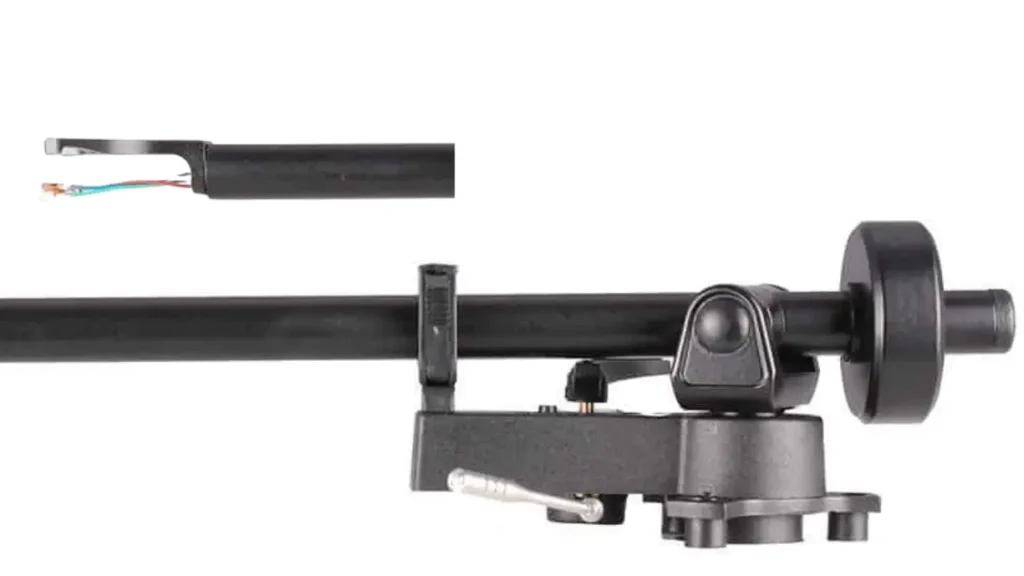
Rega RB110: Budget-Friendly, Performance-Rich Tonearm
When the RB110 tonearm first appeared on the Planar 1, I’ll admit I wasn’t immediately impressed. It seemed to stray from the hallmark that’s defined by Rega arms since the iconic RB300 (1983) and RB250 (1984): a single-piece, cast aluminum arm tube and headshell—a pure expression of Rega’s design ethos in one seamless component.
The RB110 takes a different approach. It’s built from three bonded parts: an aluminum arm tube, a sturdy plastic headshell, and a bearing housing. While it lacks the elegance and mechanical purity of the one-piece Rega arms, it still carries forward many of the qualities found in higher-tier models. The styling, geometry, and even features like the three-point mounting system (used to align Rega cartridges) are all there. That third mounting hole might go unused by most, though, since the lowest-priced Rega cartridge that fits it, the Exact 2, costs nearly as much as the entire Planar 1.
Still, despite the more utilitarian construction, the RB110 punches well above its class in performance. It maintains accurate tracking, low friction, and the unmistakable feel of a properly engineered tonearm. In short, it might not look or feel like a classic Rega arm at first glance, but it very much behaves like one where it matters most on the record.
The RB110 has lost the setting option for magnetic anti-skating. A few years ago, that would have infuriated me. Numerous attempts with different systems – also, but not only in the context of this test – made me milder: The preset value, which cannot be changed without tinkering, is exactly right – both with the standard scanner and with all realistic upgrades. If you want to mount exotic line contact cuts with a particularly soft suspension, you would probably need a correction downwards, but strictly speaking, a completely different, much more expensive turntable.
Listening Test: The Rega System One Sound Quality
What’s most striking about the Rega System One is how effortlessly it delivers a sound that’s tight, tonally balanced, and surprisingly dynamic, even straight out of the box. The Planar 1 turntable comes pre-fitted and dialed in at the factory, and setup is incredibly straightforward. Once you unpack the turntable, all that’s required is to slide the counterweight onto the back of the tonearm until it stops; this sets the tracking force perfectly at 20 mN (2 grams), optimized for the factory-installed Rega Carbon cartridge.
That simplicity doesn’t mean you’re stuck with the stock setup, either. We experimented with several cartridge upgrades, and the tonearm handled them with ease. The Audio-Technica VM95E (6g), Goldring E3 (6.9g), and Ortofon 2M Red (7.2g) all balanced beautifully with the RB110 arm. Even heavier cartridges like the Audio-Technica 700 series (8g) or models from the Grado Timbre line (9g) would technically be supported, though at that point, you’re likely spending more than what the entire P1 is worth, making such upgrades less practical.
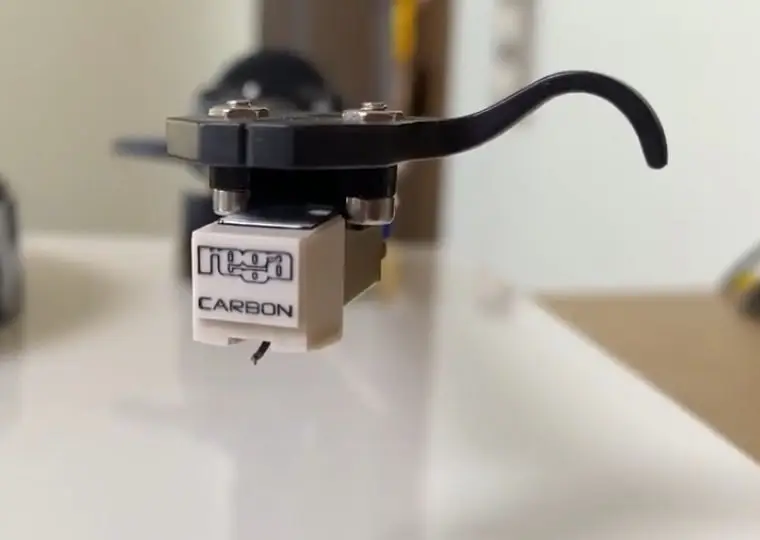
Still, it’s impressive that the System One’s basic design allows for real sonic growth without complicated adjustments or accessories. The performance is very much in line with the Rega philosophy: keep it simple, make it musical, and let the upgrades come naturally when you’re ready.
The Upgrade Path: Best Cartridges for the Rega Planar 1
In its completely stock form, the Rega System One delivers a sound that’s snappy, direct, and full of life. The standout trait is its dynamic energy, not just in the obvious, punchy sense, but in the system’s ability to extract structure and subtle details from dense, everyday recordings. It’s easy to sound impressive with over-produced “audiophile test tracks”—plenty of cheap, gimmicky systems can manage that. The real test is whether a system can take ordinary, imperfect records and make them feel fresh and engaging. And that’s exactly where the Rega chain shines—largely thanks to the excellent performance of the Planar 1.
The Kyte speakers, as expected from Rega, lean towards a leaner bass response. This shouldn’t come as a surprise to anyone familiar with the brand. Rega has been making speakers since 1980, and they’ve always prioritized tight, articulate low-end over bloated boom. The Kytes follow suit, delivering bass that’s clean and tuneful, never overwhelming or muddy. They’re also tuned for near-wall placement, which works beautifully in most real-world setups, especially for entry-level systems that may live on bookshelves or desks. In those positions, the Kytes maintain a balanced and impactful presentation, while many competitors can sound bloated or imprecise.
That said, there is a limit: push them too close to the wall closer than a hand’s width, and you begin to lose some of their clarity and grip, with little to gain in actual bass extension. But with just a little breathing room, they hit a sweet spot that’s rare in this price class.
With a little care when setting up, you can get a rich, sufficiently large-volume sound from the Kyte even in somewhat larger rooms, accompanied by monitor-like clarity, precise timing, and an image that is not particularly spacious, but is projected in front of the speaker level in a plastic and tangible manner. If you increase the volume with bass-rich music, the amplifier and speaker almost mutually give up at a certain point: nominally, the Kyte can handle a little more music power than the Io can deliver. The big passport INT25 exhausts these reserves, brings more punch in the bass at high level,s and sounds much more natural overall – but it also costs 15 times as much and uses so much electricity that you no longer need the central heating in the listening room in winter. Io and Kyte don’t want to and shouldn’t play party PA (but that applies to almost all hi-fi compact speakers), but are not at all squeamish when it comes to rocking out in everyday life. And manage to increase the incidence of air guitars in the listening room more sustainably than many a much larger combination.
Of course, we also tried to replace parts of the Rega chain with other good components. A B&W 607 S2 AE, for example, sounds much fuller in the basic tone instead of the Kyte, but ultimately not more correct and dynamically distant. I had already swapped in the superb Atoll IN50 Signature when testing the Io. It has a similar effect to the B&W and lets a relaxed mildness enter the sound. You can do that if you want to – but it’s more coherent and energetic with the Io, which also has an excellent-sounding phono input ahead of the Atoll.
The System One is coherent, round, and good, with a clear “English” emphasis on dynamics, timing, and tempo. You can listen to it enthusiastically for a long time, exactly as it comes out of the box. Upgrades are still worthwhile, namely with the pickup. The standard Rega Carbon is a rather dark-sounding system with a powerful bass and, thanks to the spherical needle, rather restrained high-frequency resolution. This also has good sides: the highs never separate themselves from the rest of the music, even on critical records, and always remain harmoniously integrated and unobtrusive. A feature that I suddenly missed a bit when I tried installing the Audio-Technica VM530EN. Even if that, with its naked elliptical diamond, made for much richer tonal colors and more lively details just as suddenly, really smooth, it didn’t want to play naturally and cleanly at the top. The no-frills, concentrated Rega slam suffered rather than benefited.
Despite the technical relationship, the E3 gold ring, which looks very nice in the Rega arm and brought in a milder, more distant diction, sounded completely different. It has a mounted elliptical diamond and also scans much cleaner than the carbon, but it made the P1 sound too harmless tonally and dynamically for my taste.
But two systems in my stock underlined the pouncing, catchy character of the P1, but at the same time refined it with silky highs and a full-bodied midrange and gave the sound a relaxed naturalness: The Nagaoka MP-100 comes from the basic balance in the series condition quite close, so it offers the same warm, sonorous tone, but now in a luxury version with smoother, more elegant iridescent surfaces. A system with unexcited authority that fits the Rega wonderfully.
My second upgrade recommendation surprised me even in the listening test: The Ortofon 2M Red is certainly not a particularly original tip, but it simply plays incredibly dynamically and cleanly in the P1, with just the right dose of fine resolution. Differentiated timbres, physical representation – everything is there. Nothing for non-conformists, but that doesn’t matter because the Ortofon – like the somewhat more exotic Nagaoka – supports the Rega chain exactly in its strengths. I wouldn’t push the player’s upgrades much further. The player rewards a wall bracket very clearly in terms of sound. It doesn’t necessarily have to be the great but expensive Rega Wall Mount. A trip to the hardware store and maybe 50 euros for material (console angle, two multiplex boards, various small parts) are enough for a nice workplace for the player.
Conclusion: Rega System One
For a modest budget, the Rega System One delivers an impressive dose of everything that makes music compelling, emotional, and deeply engaging. It’s hard to imagine another combination that offers this level of musical communication without spending significantly more.
Sure, if your tastes lean heavily toward bass-driven genres like hip hop or house, other setups might offer more sheer low-end power for the same price: larger speakers, more cone area, and deeper extension. And yes, for the price of the Io alone, you could find amps with more watts, more features, or flashier looks. But few, if any, match the Rega system’s ability to bring music to life with such immediacy and coherence.
The System One doesn’t just add up, it synergizes. Even though it isn’t substantially cheaper than buying the Planar 1, Io, and Kyte separately, the real value lies in how seamlessly these components work together. The result is more than the sum of its parts: a system that speaks to the heart of music lovers, not spec-chasers.
Pros and Cons: Rega System One
Pros
- Excellent Sound Quality: Clear, detailed, and engaging audio.
- Perfect Synergy: Components are designed to work seamlessly together.
- Compact & Stylish: Minimalist design fits well in any space.
- Easy Setup: Simple plug-and-play experience.
- Trusted Brand: Backed by Rega’s strong audiophile reputation.
Cons
- Limited Customization: Not ideal for mix-and-match setups.
- Pricey for Beginners: Higher cost than some entry-level options.
- Lacks Features: No digital inputs or wireless connectivity.
- Availability Issues: It may be harder to find in some regions.

